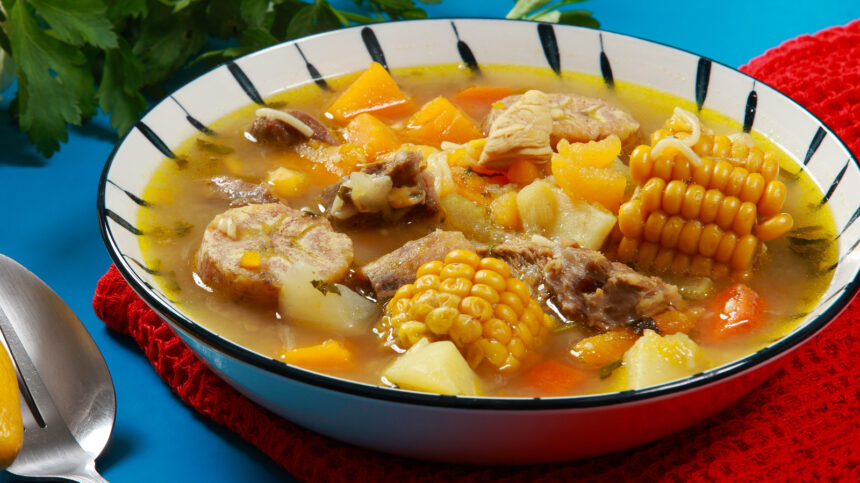Imagine walking through a bustling marketplace in a quaint town, the aroma of spices and fresh ingredients filling the air. Among the many culinary delights on display, one dish catches your eye. It’s something that’s not frequently seen outside this local area, but it instantly intrigues you. This is the magic of ceñillin, a traditional dish that holds a deep connection to its roots and offers a unique culinary experience.
For many, ceñillin is a hidden gem—rich in history, culture, and flavor. But what exactly is ceñillin, and why is it so revered? In this article, we will explore its origins, ingredients, and cultural significance. We’ll also delve into why this dish has managed to maintain its place in modern kitchens, despite the rise of fast food and globalized cuisine.
What is Ceñillin?
Ceñillin is a traditional dish from a specific region, particularly known for its unique blend of flavors and its cultural importance. While its exact composition can vary depending on the region, it is often considered a celebration of local, fresh ingredients. The dish is typically made with a variety of meats, vegetables, and aromatic herbs, stewed together to create a hearty, flavorful meal that’s perfect for family gatherings or festive occasions.
But the real beauty of ceñillin lies not only in its taste but in the story it tells. Each ingredient, each spice, and each preparation technique reflects centuries of tradition. It’s a dish that embodies the spirit of the community, passed down through generations, and served with pride.
The Origins of Ceñillin
To truly understand ceñillin, we must first take a step back and look at its origins. While the precise history of ceñillin can be difficult to trace, it is believed to have roots in the rural areas where simple yet flavorful meals were prepared using locally available ingredients. These dishes often had to be hearty to sustain workers through long, labor-intensive days in the fields.
Traditionally, ceñillin was a dish prepared for communal gatherings, especially during harvest time or after a long day of farming. It was a way to bring people together, sharing both food and stories. Over time, the recipe for ceñillin has evolved, incorporating various regional influences, yet it still maintains its status as a culinary symbol of comfort and tradition.
Key Ingredients of Ceñillin
What makes ceñillin so special is the way its ingredients are chosen and prepared. The dish is all about simplicity, using fresh, locally sourced items that enhance its flavor profile.
Common Ingredients in Ceñillin:
-
Meats: Often, a variety of meats, such as pork, beef, or even chicken, are used in ceñillin. The meats are typically slow-cooked to tender perfection, allowing the flavors to meld together.
-
Root vegetables: Ingredients like potatoes, carrots, and turnips are staples in the dish, providing both texture and a natural sweetness.
-
Aromatic herbs: Fresh herbs like thyme, rosemary, and bay leaves are commonly used to infuse the dish with depth and fragrance.
-
Broth: A rich, flavorful broth made from meat bones or vegetable stock forms the base of the dish, soaking up all the wonderful flavors.
-
Beans or pulses: These help to add substance to the dish and are often a common feature in ceñillin, especially in rural recipes.
-
Spices: While simple, ceñillin can also include mild spices like garlic, paprika, or cumin, which enhance the overall flavor without overpowering the dish.
Each of these ingredients contributes to the overall complexity and richness of ceñillin, creating a meal that is deeply satisfying and full of character.
How Ceñillin is Prepared
The preparation of ceñillin is a labor of love. It requires patience and attention to detail to allow the flavors to fully develop. Here’s a general breakdown of the preparation process:
-
Meat Preparation: The meat is often marinated or seared before being added to the pot to lock in the flavors.
-
Cooking Vegetables: The vegetables are typically added to the pot at different stages, ensuring that each component is cooked to perfection.
-
Simmering: The dish is simmered for several hours, allowing the broth to reduce and thicken, concentrating all the flavors into a rich and hearty base.
-
Final Touches: Once cooked, the dish is often garnished with fresh herbs or a sprinkle of spice to add a finishing touch.
The beauty of ceñillin lies in its versatility. While there are traditional ways to prepare the dish, it can be customized based on what’s available or according to personal preferences.
Why Ceñillin Matters
More than just a meal, ceñillin represents the essence of community, tradition, and home. It’s a dish that brings people together and connects them to their cultural roots. In many ways, preparing ceñillin is an act of honoring one’s heritage and sharing that story with others.
In today’s fast-paced world, where convenience often trumps tradition, this dish serves as a reminder of the importance of slowing down, savoring the moment, and appreciating the effort that goes into creating something truly special. It’s about connection—whether it’s the connection to the past, to the land, or to the people you’re sharing the meal with.
Ceñillin in Modern Times
While the global food industry is dominated by fast food and pre-packaged meals, dishes like ceñillin continue to have a place in our hearts and kitchens. The growing interest in farm-to-table eating, sustainable agriculture, and cooking from scratch has led many people to rediscover traditional dishes like ceñillin.
It’s also a dish that fits into the modern focus on slow food—food that is prepared thoughtfully, with attention to quality and flavor. As people seek out more authentic and meaningful dining experiences, ceñillin has found its way back into kitchens, both in rural areas and urban homes.
The Cultural Significance of Ceñillin
At its core, ceñillin is a reflection of the culture and lifestyle from which it originates. It’s a dish that tells the story of hardworking communities, where food is not just fuel but a way to connect with one another. It’s about celebrating the harvest, appreciating the land, and cherishing the time spent together.
Ceñillin as a Culinary Tradition
Ceñillin isn’t just a meal—it’s a tradition passed down through generations. In many families, the recipe is kept secret, handed down from grandmother to mother, from one cook to the next. Each person who prepares this dish adds their own personal touch, ensuring that the dish never loses its unique flavor, even as it evolves.
It’s also a dish that can vary from region to region, with local variations that reflect the diversity of ingredients available in different areas. Whether it’s a rural farmhouse or an urban kitchen, it remains a beloved dish that carries the essence of its place of origin.
Conclusion:
In conclusion, ceñillin is more than just a dish—it’s a symbol of tradition, community, and culture. This hearty, flavorful meal continues to be cherished for its rich history, diverse ingredients, and the love that goes into its preparation. Whether enjoyed at a family gathering or prepared as a comforting meal at home, ceñillin serves as a reminder of the power of food to bring people together.
As we continue to embrace the values of sustainability, authenticity, and connection, dishes like ceñillin will no doubt continue to hold a special place in our hearts. So the next time you find yourself craving a meal that’s both comforting and full of character, remember the timeless dish of ceñillin—a true reflection of the traditions that make our culinary world so rich and diverse.






